
Last Updated: July 14th, 2025
Victoria
1945 - c. 1970
Myra House was established by the Catholic Church in 1945 and run by the Legion of Mary. It was a Home for girls aged 14 to 18. It could accommodate up to 12 residents, and the average stay was between 3 and 5 months. Myra House was located in Kew until 1954 when it moved to the suburb of Malvern. It closed around 1970. When it opened in 1945 Myra House was located in a house originally called Kalimna, in Sackville Street, Kew. (This building was next door to the Salvation Army Catherine Booth Girls’ Home.) The Legion of Mary was a Catholic lay apostolate of women which was established in Ireland in 1921. The Legion first established itself in Australia in 1933. It established the Regina Coeli hostel in North Melbourne in 1939, a Home for “derelict” or “unfortunate women” (Institute of Sisters of Mercy, 29 August 2018). The opening of Myra House was announced in January 1945. Catholic Archbishop of Melbourne, Daniel Mannix, stated that girls trained by the Legion of Mary at My
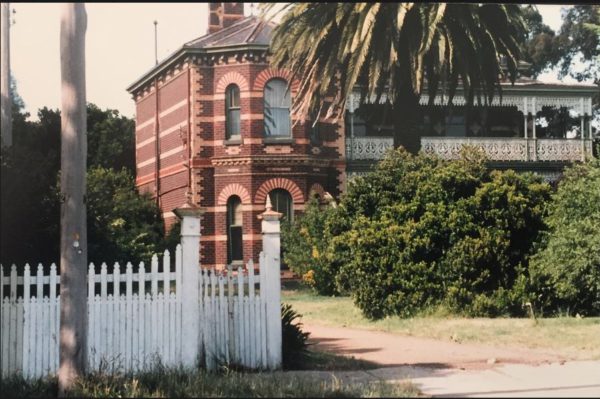
Last Updated: July 14th, 2025
Victoria
1912 - 1992
These records were created by the Mont Park Hospital and contain information about patients, staff, and administrative matters at Mont Park. The collection is held by the Public Record Office of Victoria. The records contain personal details of people admitted to Mont Park, including children and young people. Records about patients include admission and discharge registers, patient case files, patient index cards, patient movement books, patient leave registers, escape registers, medical examination registers, restraint and seclusion registers, boarding out registers, and nurse report books. The collection also includes records about staff at Mont Park such as employee history cards and statistical registers, as well as administrative records such as correspondence files. Some records relate to portions of Mont Park that were used by the military during and following WW1, and include information about military patients. Access Conditions The majority of the records in this

Last Updated: July 14th, 2025
Victoria
c. 1955 - 1990s
Hartnett House was established in around 1955 when Melbourne City Mission amalgamated its Maternity Home and its Toddlers’ Home on Albion Street, Brunswick. The new institution was named Hartnett House in 1958. In 1973 Hartnett House stopped operating as a maternity home and ceased its adoption operations but continued as a children’s home. In 1982 Hartnett House ceased offering long-term residential care in the main house in Brunswick, which was used primarily as a family centre. It instead opened several family group homes and temporary residential care units, which operated into the 1990s. In 2019 Hartnett House is a child-care and early years education centre. In 1955, Melbourne City Mission amalgamated its Maternity Home and its Toddlers’ Home located in Albion Street, Brunswick. The new institution was named Hartnett House in 1958 (after Sister Hartnett, who founded the Maternity Home in 1900). The Department undertook regular inspections of Hartnett House from 1950 to the
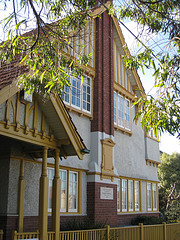
Last Updated: July 14th, 2025
Victoria
1970 - 1994
Lisa Lodge Girls’ Hostel, Ballarat, was established in 1970 and was run by a committee of women, all of whom were Honorary Probation Officers. It provided residential care for eight adolescent girls at a time. Lisa Lodge was located in a number of different properties around Ballarat. The Hostel closed in 1994. Some time after this, Hayeslee House (another Home in Ballarat, run by the same committee) became known as Lisa Lodge. The establishment of Lisa Lodge Girls’ Hostel in 1970 was in response to concern about the number of girls from Ballarat being sent to Winlaton Training Centre in Melbourne. Lisa Lodge’s first committee was made up of eight women, who were all also Honorary Probation Officers. Every resident at Lisa Lodge had her own probation officer, assigned by the court. In her history of Lisa Lodge, long-serving executive director Di Noyce states that the hostel was similar to a program for boys, established in Ballarat by Fr Tom Brophy in the late 1960s and early 197
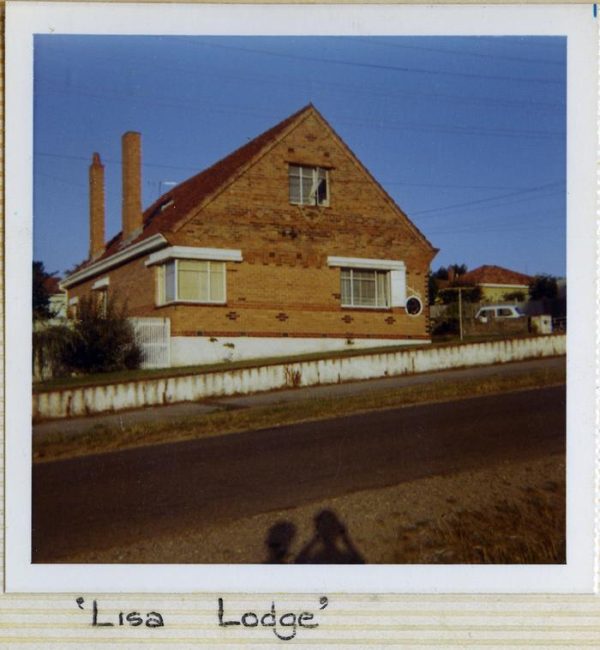
Last Updated: July 14th, 2025
Victoria
1977 - 1984
‘Glastonbury at Colac’ was established in 1977 when Glastonbury Children’s Home in Geelong purchased St Cuthbert’s Children’s Home. It operated three family group homes on the site. The Geelong-based organisation Glastonbury Children’s Home had a longstanding concern for children in Victoria’s Western District. Glastonbury purchased St Cuthbert’s Children’s Home in Colac when it closed in 1977. Glastonbury decided to demolish the main building ‘Cooraminta’, and to subdivide the land, selling one of the brick veneer houses on the property. The three other family group homes previously operated by St Cuthbert’s were kept and taken over by Glastonbury Children’s Home, and known as ‘Glastonbury at Colac’. An article from August 1978 stated that after Glastonbury purchased the property, the Cooraminta building was demolished, leaving 4 brick veneer houses, and fourteen acres of land. This land was to be subdivided ‘into residential building blocks, by this means it is anticipated t
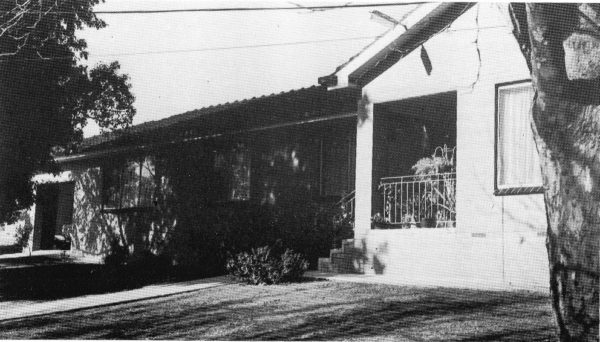
Last Updated: July 14th, 2025
Victoria
c. 1939 - c. 1992
The Frances Barkman Homes were run by the Australian Jewish Welfare Society (AJWS). From the late 1930s, the Society used a Balwyn mansion, Larino, to accommodate Jewish children migrating from Germany and Austria, including survivors of the Holocaust. In the 1960s, the Society shifted its model of care towards family group homes in the Caulfield area. Frances Barkman Homes closed around 1992. In the late 1930s, the Australian Jewish Welfare Society (AJWS) leased a mansion known as ‘Larino’, to be used as a home for Jewish children migrating from Germany and Austria. The mansion was located at 23 Maleela Avenue, Balwyn, on the corner of Whitehorse Road. Frances Barkman had been the first to propose the immigration of Jewish children to the Executive of the AJWS in late 1938. In February 1939, the AJWS formally requested the Australian government to grant visas to 750 Jewish children over the next three years. In March, the Australian government responded, however begrudging
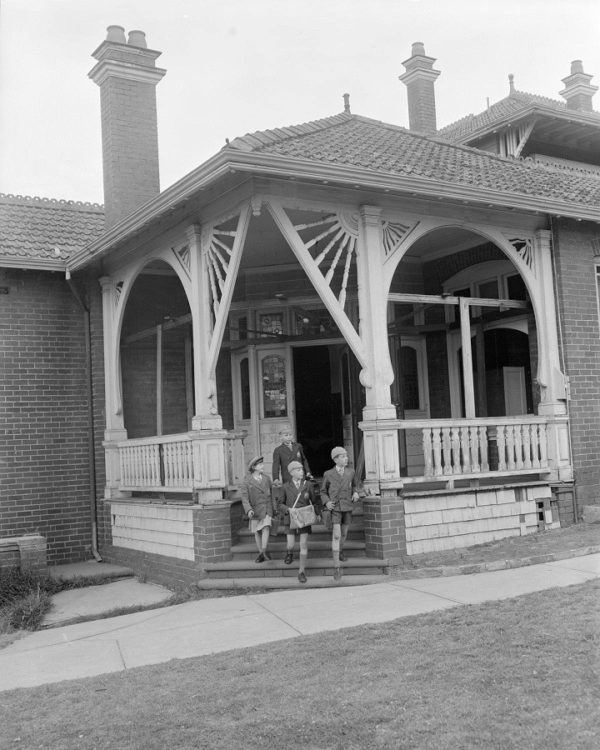
Last Updated: July 14th, 2025
Victoria
1900 - c. 1955
The Melbourne City Mission Maternity Home opened in Brunswick in 1900. It housed pregnant mothers, babies and arranged some adoptions. From 1947 a Toddlers’ Home called Hartnett House operated on the same site. In 1955, the Maternity Home and Toddlers’ Home were amalgamated into one unit. It was renamed Hartnett House in 1958. The Melbourne City Mission Maternity Home was founded in 1900 by Sister E. Hartnett. Until 1903, it was situated in rented premises in Lygon street, East Brunswick. It then moved to Albion Street, Brunswick, to a building formerly used by the Salvation Army as a rescue home (the Brunswick Girls’ Home). The Home in Albion Street functioned as a ‘pre-maternity home’ for pregnant mothers and was registered to care for babies. Sister Hartnett arranged the adoption of some of the children in the Home’s care and supported other mothers to maintain their parenting role. Due to the poor condition of the original buildings, a new maternity home was built on the A

Last Updated: July 14th, 2025
Western Australia
1981 - current
Westview was the new name given to the Geraldton Group Home in 1981 when it moved to new premises. It was a government-run facility providing accommodation for children aged 0-17 years, including Aboriginal and non-Aboriginal children who were wards of the State and those who were not wards. Over the years, Westview has been involved in emergency, short and medium-term accommodation and in placing children into foster care. Westview has been a government-run residential child care facility in Geraldton since it replaced the Geraldton Group Home in 1981. Although it has always kept ‘Westview’ in its title, it can be found in government reports with a variety of extensions to that name. For example, in 1985 it was ‘Westview Emergency Cottage’ and in 2014, ‘Westview Group Home’. There is little publicly-available admission information for Westview, but reports from 1984-1986 (Signposts pp.217-218) show that there were no children resident at year end in 1984. However, there i

Last Updated: July 14th, 2025
Victoria
1950 - 1973
The Lutheran Children’s Home (also known as the Lutheran Peace Memorial Home) was established in 1950 by the Evangelical Lutheran Church of Australia. The Home, located in Canterbury Road, Surrey Hills, housed the children of widowed post-war immigrants, to enable the women to work. In 1955, the Home relocated to a larger property in Sackville Street, Kew. This Home was closed in 1973. The Lutheran Church continued to operate family group homes in eastern Melbourne in the 1970s and 1980s, and also moved into foster care in the Glenelg region of south west Victoria from the 1980s. The Lutheran Children’s Home was officially opened on 22 October 1950. Its first location was at 760 Canterbury Road, Surrey Hills, in ‘a fine brick house, in a pretty garden’, as it was described by The Age in 1954. The Home, which could accommodate around 40 children at a time, was established to care for the children of widows who migrated to Australia following the Second World War, to enable
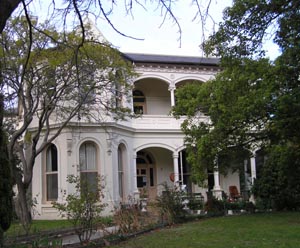
Last Updated: July 14th, 2025
Victoria
1927 - 1961
The Ballarat Orphanage Boys’ Hostel was established in 1927. It housed boys (up to the age of 18) from the Orphanage who had been apprenticed out to various trades. The Boys’ Hostel in Victoria Street was formerly a private hospital called Warrawee. The hostel closed in 1961 when it was purchased by the Social welfare Department, and the Victorian government opened a Reception Centre on the same site. At the time of its closure there were two boys living at the hostel, both of whom were transferred to private boardings. The building in Victoria Street, Ballarat, was purchased for £3500. This was funded by a £1000 grant from the Charities Board, and further contributions from the HV McKay Charitable Trust, the Edward Wilson Trust and the Alfred Felton Estate.

Last Updated: July 14th, 2025
Victoria
1865 - 1879
The Sunbury Industrial School was established in 1865. It was located on Jacksons Hill, in Sunbury. On its closure, in around 1880, boys from Sunbury were transferred to the Royal Park Industrial School in Parkville. The Sunbury Industrial School was the first purpose-built institution created by the government in 1865 in response to the Neglected and Criminal Children’s Act 1864 which provided for the establishment of industrial schools where children deemed to be neglected were to be placed. The completion of Sunbury was scheduled for December 1865, with a proposed capacity of 650 children. It opened early, in January 1865, initially with only 3 of the 10 planned dormitories. The Princes Bridge Industrial School, which opened in Melbourne in 1864, was experiencing overcrowding at this time A total of 411 children were transferred to Sunbury from Princes Bridge between January and October 1865 (Spen
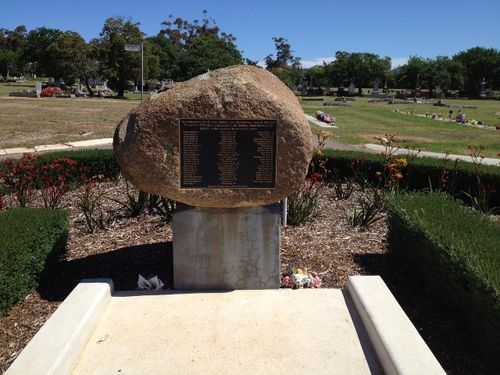
Last Updated: July 14th, 2025
Victoria
1886 - 1951
The Gordon Institute, Melbourne, was established in 1886. It offered boys classes and a place to socialise. The Institute aimed to find boys work placements in the country, but did accommodate some boys aged 5 to 14. In 1951, new facilities were opened in Highett, and the institution became known as the Gordon Home for Boys. The Gordon Institute was established in 1886, but was founded formally on 17 May 1888. It was located in Bowen Street, Melbourne, ‘not far from the Working Men’s College’. The Institute’s object was ‘to rescue children from criminal ways by attracting them from evil associations and pastimes to the premises’. The Institute was established following the efforts of William Mark Forster (who was also a key figure in the establishment of the Try Society). In 1889, Forster and Charles Deynes Barber were approved under s.62 of the Neglected Children’s Act 1887 ‘as persons to whose care neglected children may be committed’. Barber was the superintendent at the Go
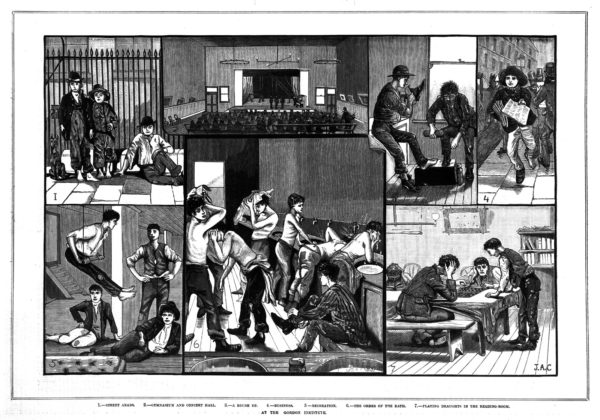
Last Updated: July 14th, 2025
Victoria
1944 - 2000?
St Martin’s House was established in June 1944, in Burwood Road, Auburn (Hawthorn East) on a site that had previously been St Martin’s Home for Boys (1921-1926). In 1953, a new St Martin’s House opened on the grounds of St John’s Home for Boys in Canterbury. It accommodated boys over the age of 15, who would previously have had to leave St John’s when they found jobs. The hostel accommodated child migrants from Britain. In the late 1970s it was converted to a specialist hostel. It would seem that St Martin’s Hostel operated until around the early 2000s. St Martin’s House, ‘a new hostel for senior boys from children’s institutions, sponsored by St John’s Home for Boys’, was officially opened in June 1944 (The Argus 29 May 1944, p.6). At St Martin’s House: The boys enjoy greater freedom and personal attention at the hostel. They make some contribution towards their maintenance from their weekly wages, but most of their earnings are banked for their future use or
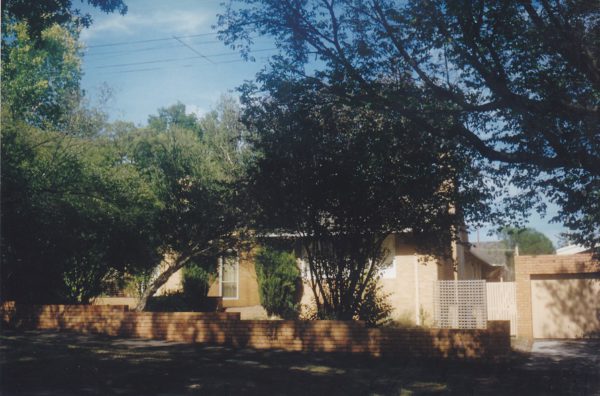
Last Updated: July 14th, 2025
Victoria
1968 - c. 1983
Molloy House was established by the St John’s Homes for Boys and Girls in 1968. It was a hostel, run in conjunction with the Church of England Boys’ Society. Molloy House was a ‘halfway house’ for young people on Children’s Court probation. Molloy House was in Canterbury until 1979 and then moved to Brunswick for around another 3 years. A statement by the Anglican Diocese of Melbourne to the Royal Commission into Institutional Responses to Child Sexual Abuse as part of Case Study 52: Institutional review of Anglican Church authorities contains some information about Molloy House. The statement says that income from the farming at Burton Hall, Tatura (whose Farm Training Scheme had closed in 1967) went to support ‘a Hostel for Probation Boys established at Maling Road Canterbury. This establishment later became known as “Molloy House” and was in association with the St John’s Home for Boys and Girls. The aim of these hostels was to assist, train and rehabilitate youths b
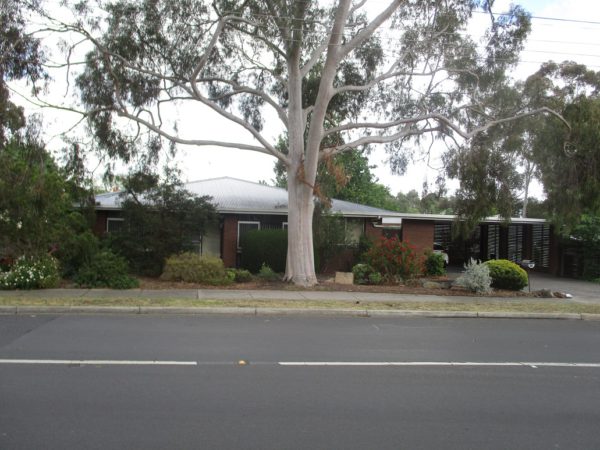
Last Updated: July 14th, 2025
Victoria
1927 - c. 1932
Ramoth Toddlers’ Home in Ferntree Gully was established in 1927 by the Mission of St James and St John. Many of the children came from the Kedesh Maternity Home and, at the age of five, moved to the Mission’s Homes in Glenroy. In 1932,the Ramoth Toddlers’ Home was closed and resident children were transferred to St Luke’s Toddlers’ Home in Bendigo. Ramoth Toddlers’ Home in Ferntree Gully opened in October 1927. It was run by the Mission of St James and St John. Previously, it had been used by the Mission as a Home for women with venereal diseases. Many of the children at the Toddlers’ Home had previously been at the Kedesh Maternity Home. Some of these children went on to the Mission’s Homes in Glenroy at the age of five. In 1931, Archdeacon Lamble spoke of the children at Ramoth who had come from, or were destined to go to, other Mission institutions: ‘…the horizons of these children had changed from one of despair to that full of possibility for which they were being equip

Last Updated: July 14th, 2025
Victoria
1934 - 1939
St Barnabas’ Boys’ Home, in Newhaven, Phillip Island, was established in 1934. It was formerly known as the Seaside Garden Home for Boys. The Mission of St James and St John took over the Seaside Home following criticism about its conditions, including the death of a boy. St Barnabas’ was adjacent to St Paul’s Training School, also run by the Mission, and both Homes accommodated ‘problem boys’. St Barnabas’ was closed in 1939. St Barnabas’ Boys’ Home, in Phillip Island, came into being in 1934. Previously, it had been known as the Seaside Garden Home for Boys. In 1934, the Seaside Garden Home was taken over by the Mission of St James and St John. Seaside Garden was situated adjacent to a training school already run by the Mission, St Paul’s Training School. Like St Paul’s, Seaside Garden was a facility for ‘problem boys’, originally set up as a non-denominational institution. In 1934, the Charities Board requested the Mission take over its operations following serious criticis

Last Updated: July 14th, 2025
Victoria
1926 - 1986
Kedesh Maternity Home was established by the Mission of St James and St John in 1926. It accommodated pregnant women and mothers and babies shortly after birth. It was first located next to the Women’s Hospital in Carlton but in 1929 moved to Kew. In 1986 the Home was closed, and was replaced by the Kedesh Hostel in Box Hill. Kedesh’s first location was at 210 Cardigan Street, Carlton, adjoining the Women’s Hospital. From 1926 to 1929, more than 250 women passed through Kedesh at this site. In 1929, the Missioner Canon Lamble acquired more spacious premises for Kedesh, at 131 Stevenson Street, Kew. By 1935 this address had changed to 79 Stevenson Street, however the premises remained the same. In its early days, Kedesh was run by Matron Keir (who did not retire until 1942). The Matron liked the ‘girls’ to come to the Home two months before their baby was due. However, she reported that many young women were anxious to leave their homes earlier, or their parents were anxious to
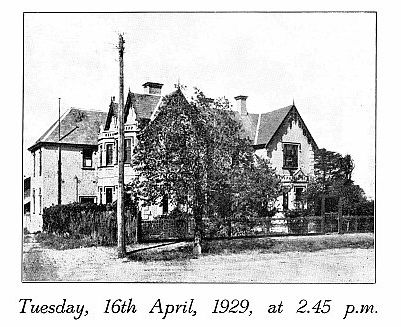
Last Updated: July 14th, 2025
Victoria
c. 1921 - 1943
St Anthony’s Children’s Home in Kew was established by the Sisters of St Joseph in around 1921. It provided care for mostly boys from kindergarten age to early primary school age, and helped to ease overcrowding at St Joseph’s Foundling Hospital in Broadmeadows. Its name changed in 1943 to St Anthony’s Home. St Anthony’s Children’s Home in Kew was established by the Sisters of St Joseph in around 1921, to assist with overcrowding at St Joseph’s Foundling Hospital in Broadmeadows. The home provided care for boys from kindergarten age to early primary school age. At certain times, girls were also admitted. At the age of eight, children who had not been adopted or returned to their families were sent on to one of the Catholic orphanages. In the late 1920s, St Anthony’s also accommodated pregnant women from St Joseph’s Foundling Hospital. Barnard and Twigg write that the site chosen by Archbishop Mannix in Kew was not ideal. Mannix perhaps hoped that St Anthony’s location in Kew,
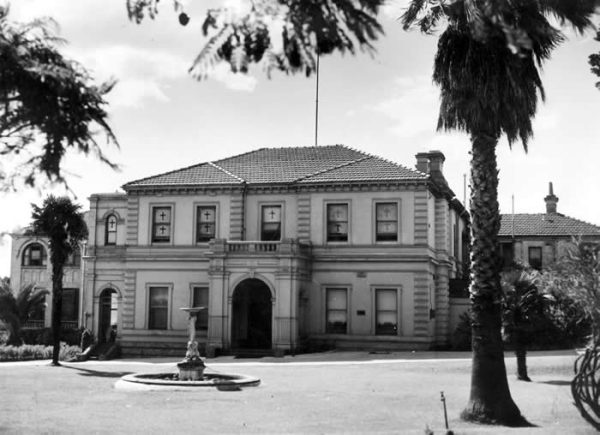
Last Updated: July 14th, 2025
Victoria
1984 - 2011
Glastonbury Child and Family Services was the new name given in 1984 to the former Glastonbury Children’s Home. The name change reflected the agency’s new directions and service philosophies. The history of the organisation dates back to 1854 and the establishment of the Geelong Orphan Asylum. In 2011, the organisation changed its name to Glastonbury Community Services.
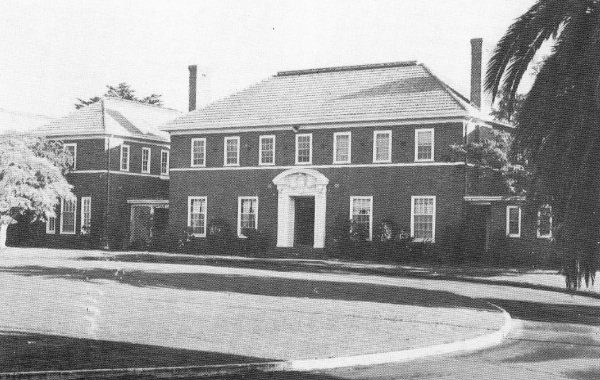
Last Updated: July 14th, 2025
Western Australia
1933 - 1992
This collection of eight photo albums was assembled by the Wheatbelt Aboriginal Corporation’s Mogumber Heritage Committee with the intention of creating a pictorial archive of the Moore River/Mogumber settlement. The albums include lots of photographs of the children, adult residents, and staff of the Moore River/Mogumber settlement, many of whom are identified by name. The photographs show the settlement and its surrounds and some of the activities that took place there, including attending school and church, sports and games, picnics, corroborees, weddings, swimming in the river, girl guides and boy scouts, farm work, gardening, and Christmas celebrations. The photos also show children on outings to places like the Perth zoo, the beach, New Norcia monastery, and at a holiday camp at Point Walter, Perth. The photos and their captions tend to show Moore River/Mogumber in a positive light, however some provide glimpses of other aspects of life at the settlement, including photos of ‘The

Last Updated: July 14th, 2025
New South Wales
1891 - 1985
St Vincent’s Boys’ Home was established in 1891 by the St Vincent de Paul Society. It was originally located in Surry Hills as a refuge for homeless children. It then moved to Redfern, then to Five Dock, and finally to Westmead in 1896. From 1896 until 1968, the Home was run as a joint venture between St Vincent de Paul and the Marist Brothers. From 1968 until it closed in 1985, the Marist Brothers were the sole managers of the home. From 1985, the Marist Brothers delivered services to children in 2 houses in Darcy Road, Westmead, as well as a medium-term program in Blacktown. In 1891, in the midst of a severe depression, members of the Surry Hills Conference of the Society of St Vincent de Paul, headed by Patrick Joseph Minahan, set up a rented house in Upton Street, Surry Hills, as a refuge for homeless children. The refuge, initially known as St Aloysius Boys’ Home, moved to Riley Street, Surry Hills, then to Five Dock, and finally to Westmead in 1896. In 1895 the Home, which up
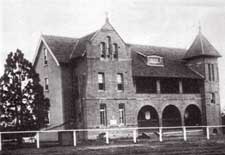
Last Updated: July 11th, 2025
Western Australia
1883 - 1983
Correspondence Files comprises the main file series for the Colonial Secretary’s Office/Chief Secretary’s Department for the post-1883 period. The correspondence files deal with all functions the office had oversight or control of. Records from the Colonial Secretary’s Office contain information about out of home care in Western Australia, as well as a range of other matters. The files up to 16 April 1924, when the Colonial Secretary’s Office was abolished, will be most relevant as by that time there were government departments for Aboriginal and non-Aboriginal child welfare. Access Conditions Access to most of the records in this series is open, however some items have restricted access. For access to items in this series please contact the State Records Office of Western Australia. Records This series contains correspondence with the department regarding specific children admitted to institutions, and regarding families seeking or receiving welfare assistance. F

Last Updated: July 11th, 2025
Western Australia
1971 - 1991
The Catherine McAuley Centre was run by the Sisters of Mercy from 1971. It replaced the St Joseph’s Girls’ Orphanage and St Vincent’s Foundling Home which closed in 1974, and were on the same site in Subiaco. Children who were wards and also those who were ‘privately placed’ lived there, or in one of the suburban cottages that were part of the Centre. In 1969 and 1970, eight girls also resided there. By 1975, possibly earlier, boys and girls (both sexes up to 18 years) lived at the centre. The Centre offered short, medium and long-term placements and by 1990 had developed a fostercare program. The Centre was named after the founder of the Sisters of Mercy, and was replaced in
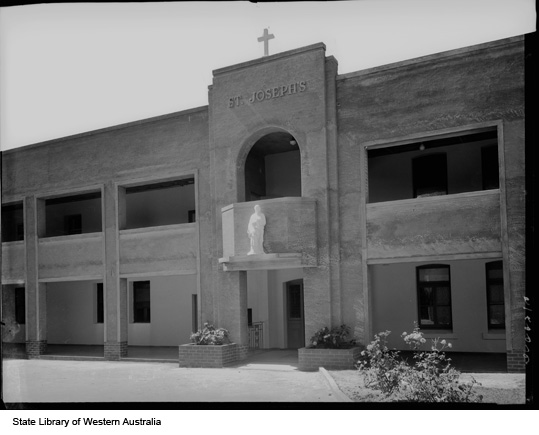
Last Updated: July 10th, 2025
New South Wales
1965 - 1985
Grosvenor Hospital was a psychiatric facility and disability institution established by the New South Wales Government at Summer Hill in 1965. It was operated by the Health Department and occupied the buildings that had formerly been the Benevolent Society’s Renwick Home for Infants, Summer Hill. It provided care for children until the 1980s. In 1985 it stopped being listed as a hospital for the developmentally disabled and became known as the Grosvenor Centre. State Records Archives Investigator provides an account of the history of Grosvenor Hospital: Grosvenor Hospital functioned as both an in-patient and out-patient facility. The out-patient service “provided for the diagnosis and assessment of mentally retarded persons of all ages”, which from the beginning experienced a heavy demand for clinic appointments. In-patient facilities totalled 80 cots; 50 cots were allocated for patients requiring permanent care and these were fully occupied at all times, 6 cots
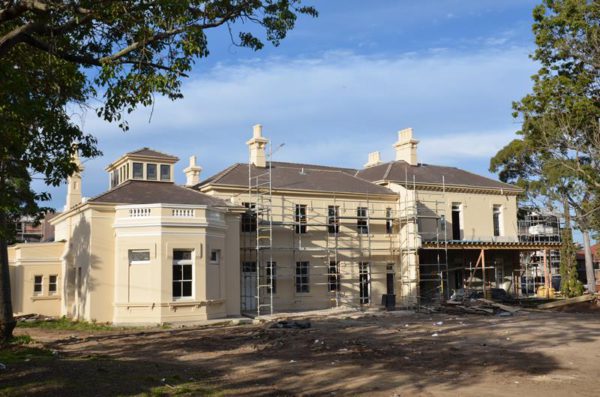
Last Updated: July 10th, 2025
Victoria
1923 - current
Legacy is a national organisation that was established in 1923 to assist men returned from the Great War and their families. Initially established to improve business prospects for returned soldiers, in 1925 Legacy’s focus became the provision of assistance to the children of deceased servicemen. In the state of Victoria, Melbourne Legacy ran a number of Homes from 1942 until the 1980s. From around 1942, Melbourne Legacy operated a number of residential homes for children. Its first Homes, Holmbush and Stanhope, were residential hostels for children or young people aged nine years and over attending some form of educational institution, including tertiary institutions. In 1947, Legacy established a home for younger children in Beaumaris, known as Blamey House. In 1950, another hostel, Harelands, opened in Kew. Children placed in institutions operated by Legacy were sometimes referred to as ‘repatriation wards’. According to the guide Finding your story, Legacy holds

Last Updated: July 10th, 2025
Tasmania
1905 - 2006
Clarendon Children’s Home Records contain records about the former residents of the Home of Mercy and Clarendon Children’s Home. The collection dates from 1905 to 2006. The collection includes admission and discharge records, photographs and slides, minute books and annual reports. Access Conditions Access to personal information in these records is subject to conditions to protect the privacy of individuals. You will need to provide proof of identity and/or relationship. Individuals wishing to see these records should contact Clarendon Children. Records Clarendon Children’s Home Records includes admission and discharge records, photographs and slides, minute books and annual reports for the Home of Mercy and Clarendon Children’s Home. There are also a few records relevant to Roland Boys’ Home. These records were catalogued, indexed and digitised as part of the Records Access Documentation Grants in 2017. The collection includes the following records:

Last Updated: July 9th, 2025
New South Wales
1979 - c. 1985
Havilah Group Home, at Frampton Street, Marrickville, was run by Church of England Children’s Homes from 1979 until 1984 as a family group home for up to 8 Aboriginal children between the ages of 6 and 14 years old. It was staffed by Aboriginal people and was one of the first homes of its kind. It was linked to the Marella Aboriginal Temporary Care Program. It closed in 1984 due to low numbers. In 1984, in its newsletter Care, Church of England Homes described the purpose of its group homes: Cornwall [Cornwell], Buckland, Havilah and Marella are our Group Homes which provide longer term care. Perhaps the children aren’t getting normal care at home. Maybe they have missed out on it for a long time. These homes provide a kind of holding situation. But one which avoids damaging them still further by providing them with a good model of a positive family-type experience. Meanwhile, everything possible is being done through the counselling service to restore family rel
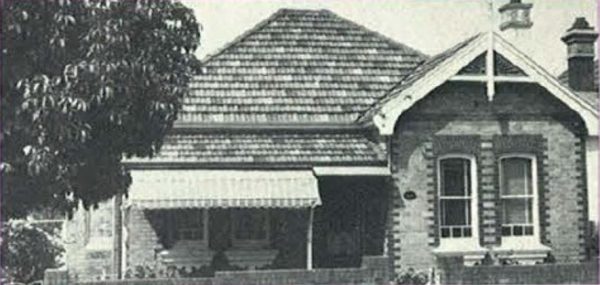
Last Updated: July 9th, 2025
New South Wales
1932 - 2010s
The Anglicare Children’s Homes, Foster Care and Out-of-Home Care Records collection includes records from the Church of England Homes and Sydney Anglican Home Mission Society, as well as some records relating to group homes and foster care. The collection also includes records from some Homes not operated by Anglicare, Church of England Homes or Sydney Anglican Home Mission Society. The collection dates from 1920s to 2010s. Access Conditions For access to these records please contact Care Leavers Records and Archives. Access to information contained in these records is restricted to ex-clients, or to a member of an ex-client’s family providing they have the written permission of that person. Support can be provided to people as they access their records. People applying to get access to information must provide proof of identity. Records The records for each individual generally contain: Admission and discharge information, including: child’s name; ad

Last Updated: July 9th, 2025
New South Wales
1930 - 1984
Lutanda Children’s Home was established in Wentworth Falls in 1930 by Miss Florence Dalwood. After Dalwood’s death in 1949, Lutanda moved into a large purpose-built orphanage on Boundary Road in Pennant Hills which later housed around 50 to 60 children in separate buildings for boys and girls. Lutanda closed in 1984. The Lutanda Children’s Home was first located in Falls Road, Wentworth Falls (in the Blue Mountains). It was opened by Miss Florence Dalwood who had worked in the George Muller Homes in Bristol in the United Kingdom and wanted to establish a Christian home for ‘needy’ children, under the auspices of the Lutanda Children’s Services. The Home was supported by donations of clothes and money, and fundraising efforts including local fetes. The children from Lutanda Children’s Home performed at events including the Presbyterian Children’s Day church services and the Children’s Special Service Mission and Scripture Union rally. A Sunday School operated out of Lutanda
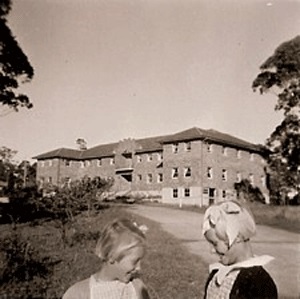
Last Updated: July 9th, 2025
New South Wales
1984 - c. 2013
Hunter ACS was a New South Wales Aboriginal Children’s Services organisation that began in Newcastle in 1984 following a need, identified by the Aboriginal Legal Service, for an Aboriginal service to take responsibility for fostering Aboriginal children of the Hunter with Aboriginal families. By August 2013 it had closed. Hunter Aboriginal Children’s Services was committed to providing quality out-of-home care for Aboriginal children; protecting them from emotional, physical and sexual abuse and neglect; and to implementing the Aboriginal and Torres Strait Islander Child and Young Person Placement Principles. It favoured foster care over residential care and supported Aboriginal families with a Family Support Program. It received funding from the New South Wales Government. In 2012 the former CEO of Hunter ACS was jailed for possessing child pornography, child sexual assault, fraud and falsifying his employment record. In August 2013 the case was considered by the Royal C

Last Updated: July 9th, 2025
New South Wales
1975 - current
Redfern Aboriginal Children’s Service was established in 1975, after the Aboriginal Legal Service identified a high number of Aboriginal children escaping from custody or from fostering situations and coming to Redfern to search for their families. Many Aboriginal children were either placed into the care of non-Aboriginal families, or were wards of the state. The ACS continues to support Aboriginal children’s wellbeing, connecting with family and alternate care. Redfern was a key location for Aboriginal self-determination, with Aboriginal-run organisations including the Aboriginal Legal Service and Aboriginal Medical Service being established in 1970 and 1971. In 1972, Black Theatre, an Aboriginal-run theatre company was started, and in 1973 the Aboriginal Housing Company was incorporated. Also in 1972, Murawaina, a childcare centre run by and for Aboriginal people, was established. While the ACS had paid staff, there were also many who worked without pay over the years to ensur
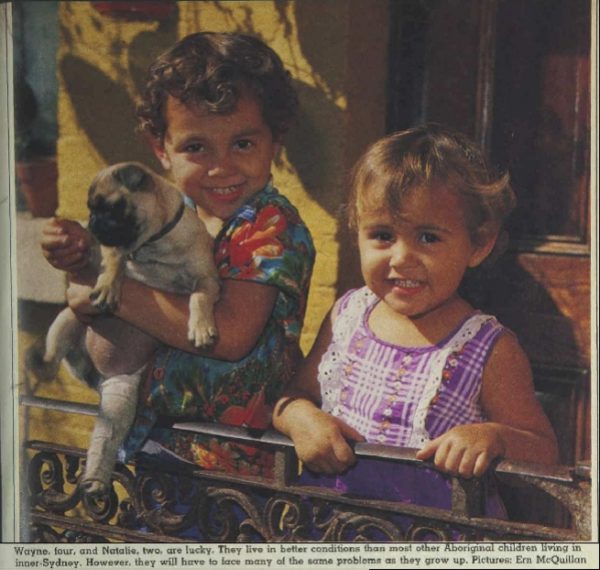
Last Updated: July 8th, 2025
Victoria
For records held or controlled by the Department of Health, please contact the Freedom of Information Unit, Department of Health: Postal address: Freedom of Information Unit, Department of Health, GPO Box 4057 Melbourne Victoria 3001 Phone: 1300 020 360 Email: foi@health.vic.gov.au Website: https://www.health.vic.gov.au/freedom-of-information

Last Updated: July 7th, 2025
Victoria
This is a photograph of a patient peeling stamps off of envelopes in the Mont Park Occupational Therapy Unit. It shows the patient with a small stack of envelopes and a shallow bowl of water with some stamps floating in it on a desk in front of them. Towards the back of the desk are three drying racks covered in removed stamps. The patient in this photograph is facing away from the camera and is not identifiable. They appear to be wearing a dark jacket over a light coloured shirt.
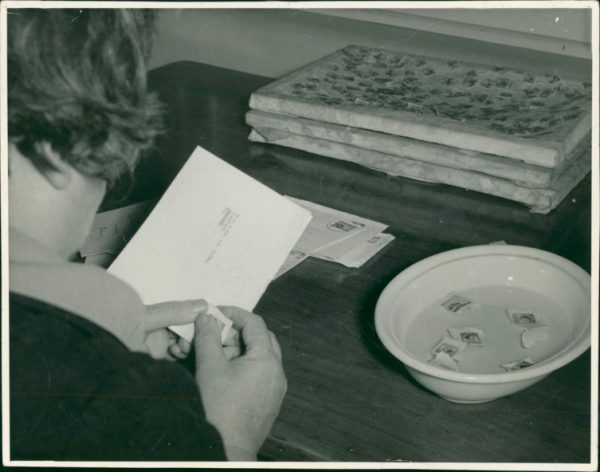
Last Updated: July 7th, 2025
Victoria
1912 - c.1997
Mont Park Hospital for the Insane was opened by the Victorian State Government in April 1912 . It provided short and long term residential treatment for patients with mental illness and intellectual disability. While Mont Park was primarily a facility for adult patients, it is known to have also treated children. At its peak in the late 1950s Mont Park held over 1700 patients. Mont Park was established with the purpose of replacing the Yarra Bend Hospital for the Insane, which had been in operation since 1848 and was struggling with overcrowding and out-dated facilities. It was located on a 1200 acre site at Bundoora (sometimes also described as at Macleod). The site was chosen due to its distance from populated areas and its good farming land, which could be used to produce food for the hospital as well as providing farm work for some of the patients. Construction of the hospital began in 1910, consisting of the first patient wards, staff accommodation, and a railway siding for the
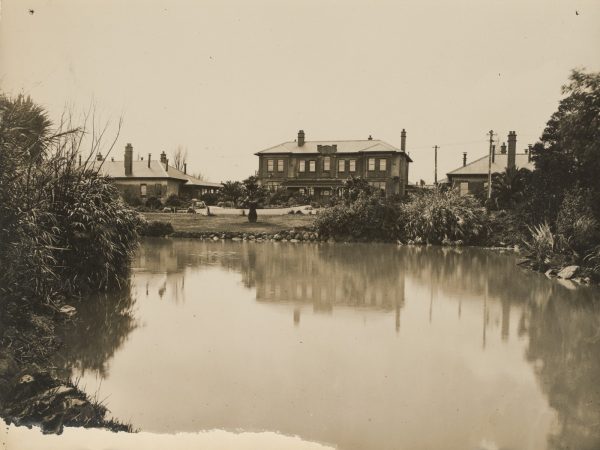
Last Updated: July 7th, 2025
Victoria
This is a photograph of the Farm Workers Block at Mont Park Hospital. It shows three stone buildings facing a large pond. The Farm Workers Block were the earliest wards constructed at Mont Park, and housed patients who were used as labor on the hospital’s vegetable gardens, orchard, and dairy, pig, and poultry farms. This photograph is part of a collection of 22 photos titled ‘Collection of photographs relating to Mont Park Hospital’ held by the State Library of Victoria.

Last Updated: July 7th, 2025
Victoria
This is a photograph showing nurses standing in what appears to be a dining room at Mont Park. It shows a room with long dining tables on one side, and smaller octagonal tables on the other side. Three nurses wearing white aprons and bonnets are standing at the back of the room. This photograph is part of a collection of 22 photos titled ‘Collection of photographs relating to Mont Park Hospital’ held by the State Library of Victoria.
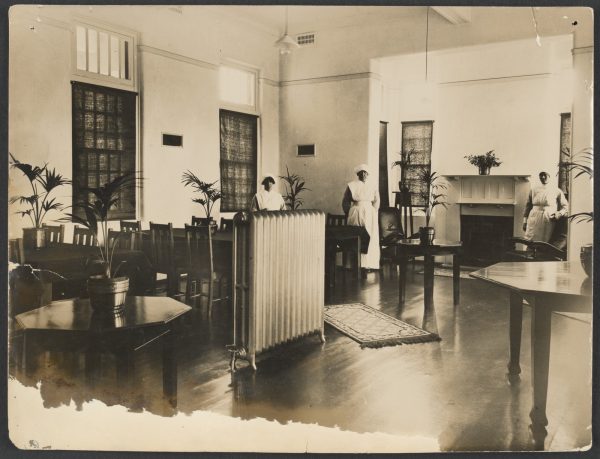
Last Updated: July 7th, 2025
Victoria
c.1917
This is a photograph of nurses standing in one of the patient dormitories at Mont Park. It shows two rows of approximately 8 beds with white embroidered sheets placed along the sides of a long room. Six nurses wearing white aprons and bonnets are standing among the beds. Down the middle of the room are two runner carpets, oil heaters, and palms on plant stands. The room appears light, with narrow windows evenly spaced between the beds. This photograph is part of a collection of 22 photos titled ‘Collection of photographs relating to Mont Park Hospital’ held by the State Library of Victoria.
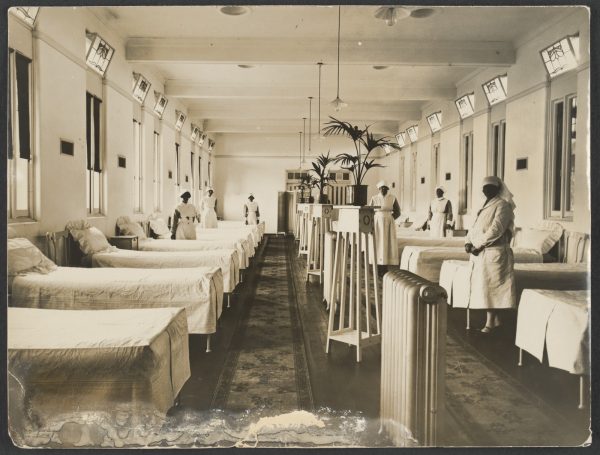
Last Updated: July 7th, 2025
Victoria
This is a photograph of the Chronic Ward Blocks at Mont Park Hospital. The Chronic Block was the main block of patient wards at Mont Park. The photograph shows a curved driveway leading up to the central building of the block, identifiable by its ornate entrance, which housed the reception ward, operating theatre and dispensary, visiting rooms, kitchen, and dining room, and later was the Mont Park administration offices. At the rear of the central building there is a large chimney visible, which was part of the laundry buildings. Following along to the right of the central building are a range of six ward buildings which each contained one of the male wards, and held between 40 and 80 patients each. The female wards, which mirrored the male wards, are out of shot in this photograph, and followed around to the left of the central block. This photograph is part of a collection of 22 photos titled ‘Collection of photographs relating to Mont Park Hospital’ held by the State Library of Vict
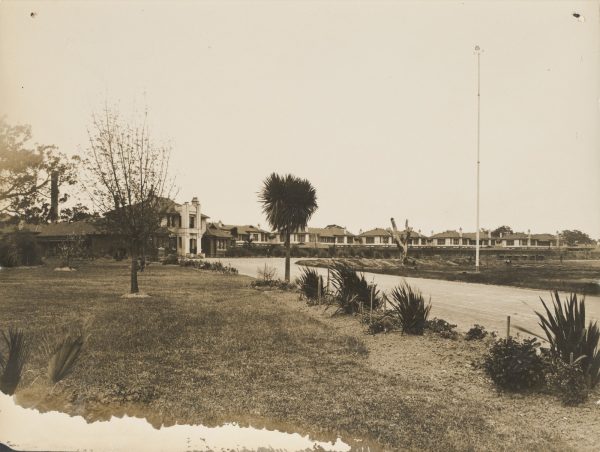
Last Updated: July 7th, 2025
Victoria
1850? - 2002
The Mental Health Photograph Collection previously available at Royal Park Psychiatric Hospital Library contains around 3,000 items. These date from the mid 1800s to 2002, with most pictures taken in the 1960s. Access Conditions Access to the materials is for non-commercial use only. Library users may not use or have access to the photographs unless the library user satisfies certain conditions contained within the Request Form (including, if relevant, signing a copyright licence). Records The images depict special events with key political or mental health figures, or feature promotional shots of everyday life in Victorian mental health institutions. Patients, staff, furnishings, equipment, activities and buildings are shown. Some of the institutions represented in the photograph collection include: Aradale Hospital Ararat Hospital for the Insane Ballarat Mental Hospital Beechworth Mental Hospital/Asylum

Last Updated: July 7th, 2025
New South Wales
1980s - 1993
Wyatt Lodge was established in the early 1980s as a residential care unit, as part of the Church of England Children’s Homes, Burwood. In the 1980s Church of England Homes Burwood changed their name to the Weldon Centre. This closed as a residential institution in 1993 due to a lack of government funding. In 2012 a former youth worker at the Weldon Centre contacted the New South Wales State-Based Historian, Naomi Parry, to donate a collection of 100 photographs, taken in 1981. These colour snapshots, which feature excursions and events within the home, have the names of children and workers written on the back. They have been deposited with the National Orphanage Museum (Care Leavers Australia Network).

Last Updated: July 4th, 2025
Western Australia
1970 - c.2013
Bamburra Hostel opened in 1970 in Yokine. It was for Aboriginal teenage girls from remote areas attending high school and other education and training, although from 1994 (or possibly earlier) boys were also admitted. Bamburra was run by the Churches of Christ Federal Aborigines Mission Board from 1970 to 1984. Since then it has been run by the government departments responsible for child welfare. Bambura remained open in 2013. Bamburra Hostel was an Aboriginal Education and Employment Hostel. It opened in 1970 in Yokine for Aboriginal teenage girls from remote areas to stay during the school year so they could attend high school and other education and training. It was run by the Churches of Christ Federal Aborigines Mission Board from 1970 to 1986. In 1986, Bamburra was transferred to the Department for Community Welfare. Boys were admitted to Bamburra from 1994, possibly earlier. Bamburra Hostel was run by the Churches of Christ from 1970 until 1986 under a formal agreement wi
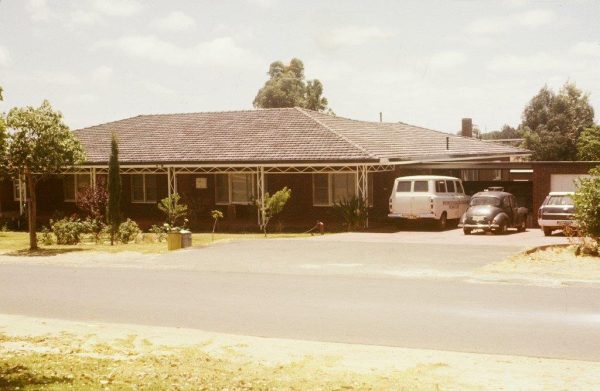
Last Updated: July 4th, 2025
Western Australia
1942 - 1986
Churches of Christ Federal Aborigines Mission Board Records is a collection of records of children placed at Missions, Homes, and Hostels run by the Churches of Christ Federal Aborigines Mission Board (1942-2009). These records are now held by Global Mission Partners. The collection includes personal record cards for each child that was placed at the following locations: Norseman Mission (1942-1986), Carnarvon Mission & Ingada Village (1946-1986), Fairhaven Hostel (1965-1986), Bamburra Hostel (1970-1986), and Roelands Village (1975-1984). The Personal Record Cards contain basic details for children, including: name, date of birth, admission and discharge dates, and parents’ names. They do not contain extensive personal histories or detailed notes. Access Conditions Access to records is restricted to protect the privacy of individuals. For access to these records please contact Global Mission Partners.

Last Updated: July 1st, 2025
Tasmania
1968 - current
The Combined Children’s Centre, run by the Mental Health Services Commission, opened on 29 March 1968, in Ellerslie Road, Battery Point. It provided mental health services to children, including state wards, and their families. In the early 1980s, it moved to Clare Street, New Town where, in 2014, it continues to operate as Clare House. The Combined Children’s Centre began as a pilot project which worked with the Guidance Branch of the Education Department. The Department of Health Services opened the Centre and handed it over to the newly formed Mental Health Services Commission within a year. The Centre employed a psychiatrist, an assistant psychiatrist, and a Senior Medical Officer (Child Psychiatry). Later it also employed psychologists and social workers. They took referrals from doctors, schools, the paediatric and psychiatric units at the Royal Hobart Hospital, children’s courts, child welfare officers, and children’s Homes. The Centre saw a number of children in foster or

Last Updated: July 1st, 2025
National
1993 - current
CREATE Foundation (formerly known as the Australian Association of Young People in Care AAYPIC) was established in 1993 to provide an independent voice for children and young people in out-of-home care. CREATE seeks to connect and empower Australian children and young people in care and, change the care system through activities, programs, training, research and policy advice. CREATE Foundation conducts and participates in research, advocates for and advises on policies that support young people in care and leaving care, and keeps and publishes statistics relating to children and young people in care in Australia.

Last Updated: July 1st, 2025
Tasmania
c. 1953 - 1980
The Child Welfare Division of the Social Services Department, and the Social Welfare Department that succeeded it, managed all aspects of child welfare work, including foster care and the government-run homes. In 1970, the Child Welfare Division had a Head Office in Hobart and three District Offices in Hobart, Launceston and Burnie. Following de-centralisation of the Department in about 1974, it had Sub-District Offices in Queenstown, Devonport, and George Town. In 1975, after the collapse of the Tasman Bridge, it also opened a Sub-District Office in Bellerive. The Division investigated the proposed homes and employment of child migrants, liaised with the organisations that brought them to Australia, and acted as their guardians under delegation from the Commonwealth Minister of Immigration. Under the Matrimonial Causes Act 1959, at the court’s request, child welfare officers employed by the Division investigated the plans made by divorcing parents to look after their c
